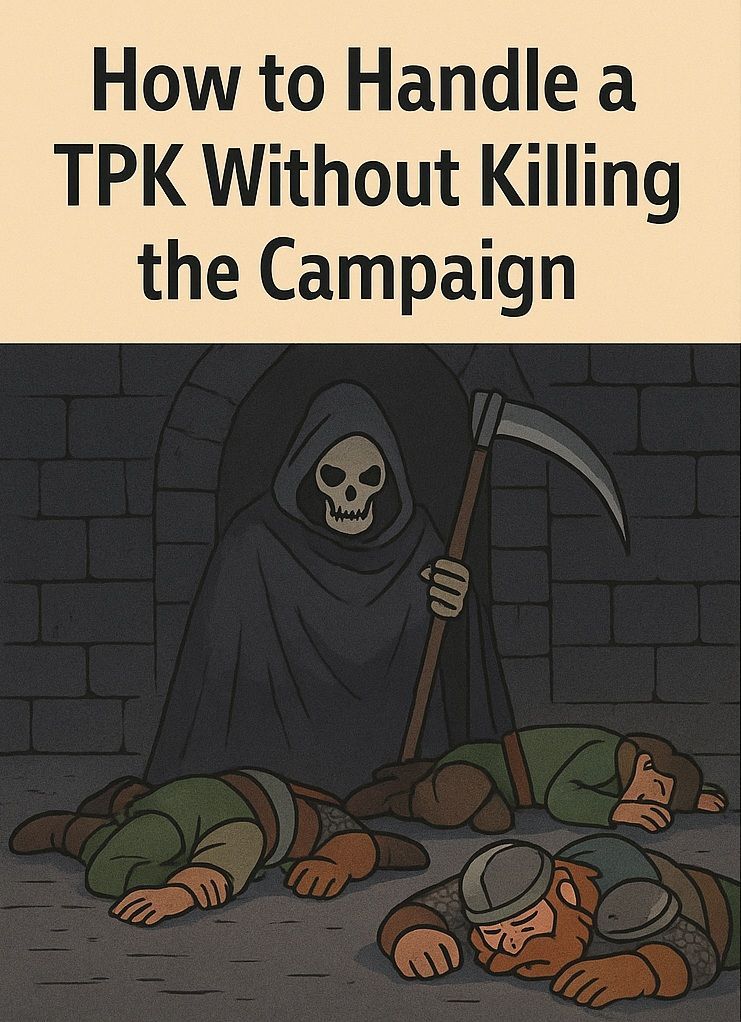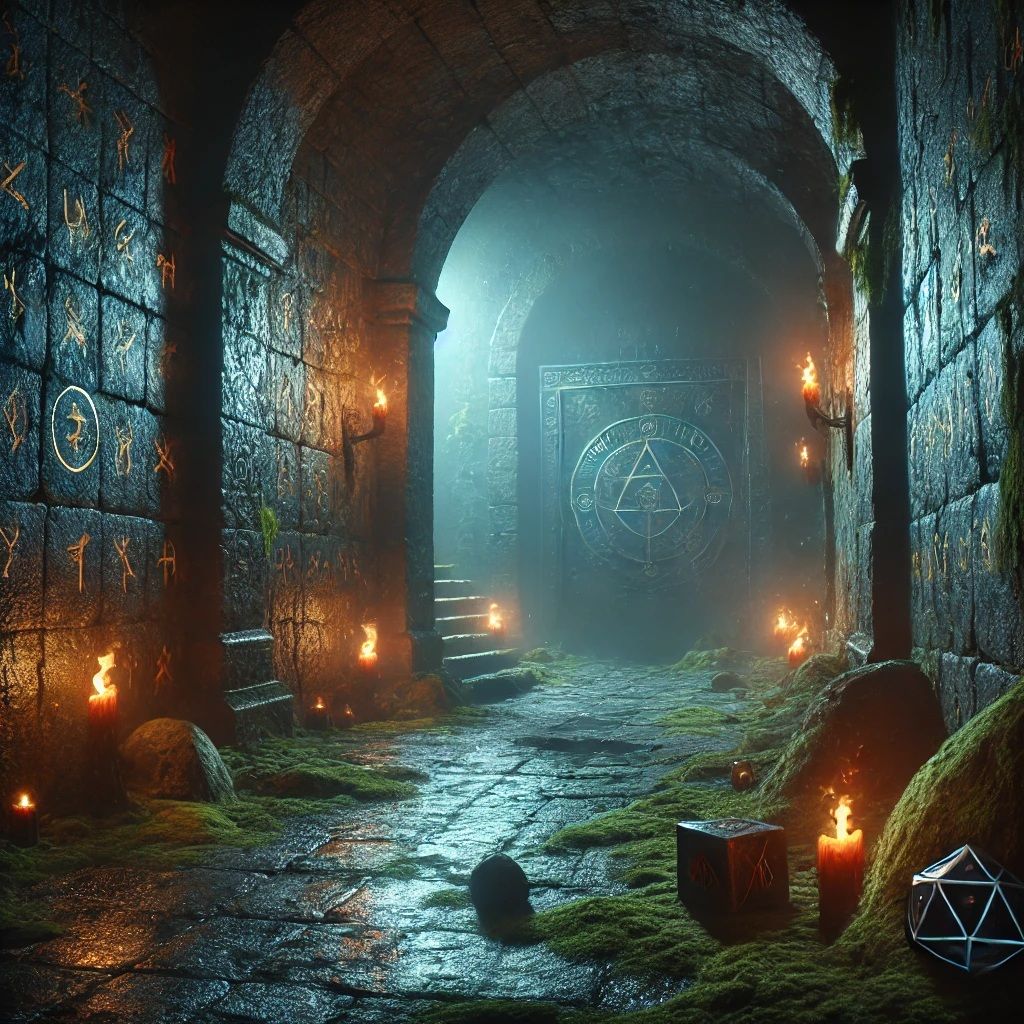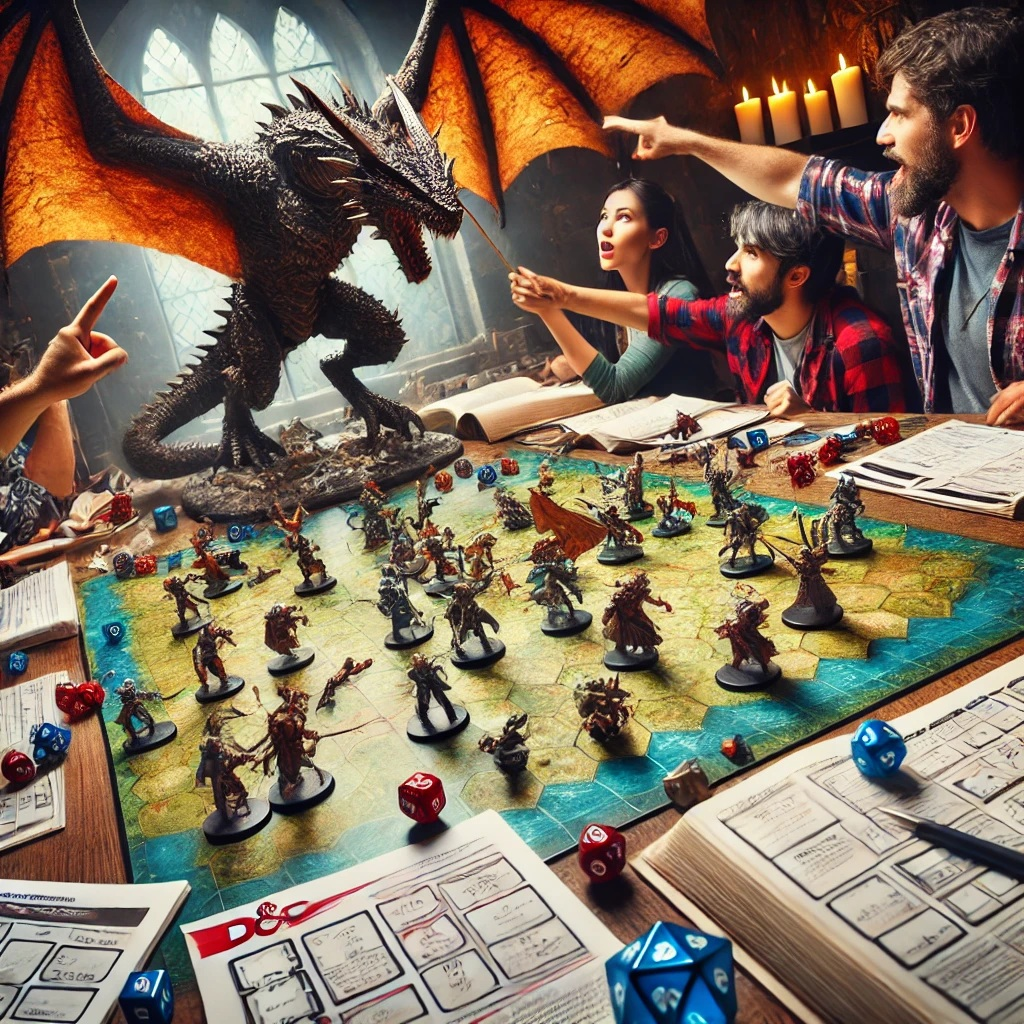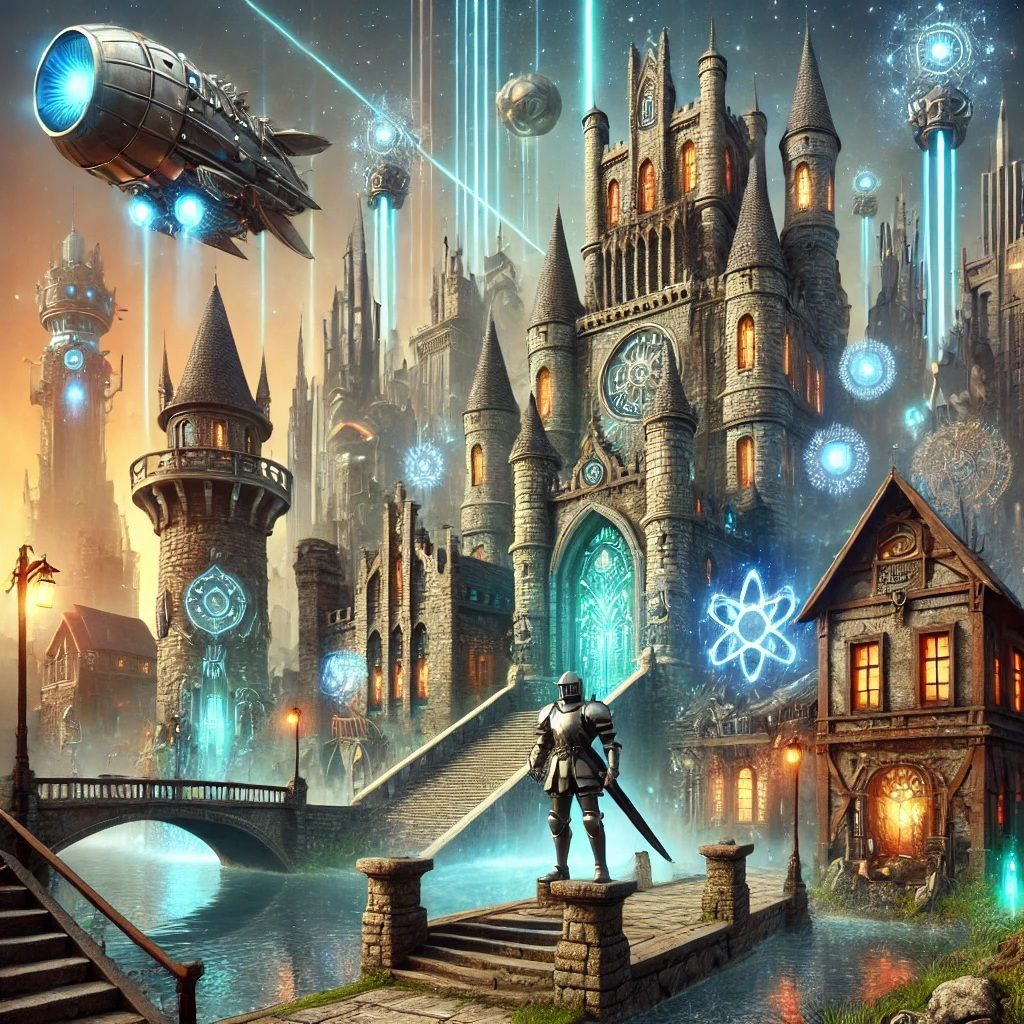Political Intrigue: Developing Complex Political Landscapes
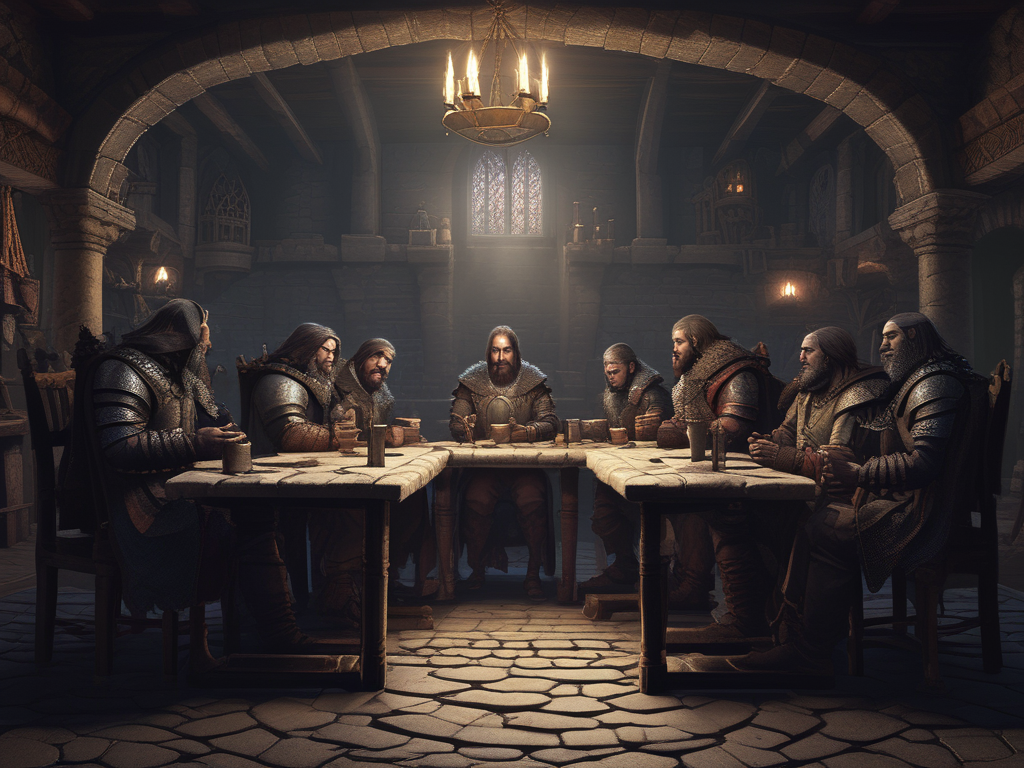
Dear Readers, welcome back to our Dungeons & Dragons (D&D) blog! Today, we’re delving into the fascinating and multifaceted world of political intrigue. Political intrigue can add layers of complexity, depth, and excitement to your campaign, creating a rich narrative tapestry that challenges your players’ strategic thinking, diplomatic skills, and moral compass. By developing a complex political landscape, you can transform your campaign into a dynamic and immersive experience where every decision can have far-reaching consequences. In this post, we’ll explore the elements of political intrigue, provide tips for creating and managing political landscapes, and offer examples to inspire your storytelling. So, let’s embark on this journey to master the art of political intrigue in your D&D campaign.
The Importance of Political Intrigue in D&D
Political intrigue can elevate your campaign by introducing nuanced conflicts, diverse motivations, and intricate relationships. Here are some reasons why political intrigue is an invaluable addition to your game:
1. Enhanced Narrative Depth
Political intrigue adds narrative depth by introducing complex characters, factions, and motivations. This creates a multi-layered story that goes beyond simple good versus evil.
Example: A corrupt nobleman seeks power not out of greed, but to protect his city from external threats, creating a morally ambiguous situation for the players to navigate.
2. Dynamic Conflict
Political intrigue provides dynamic conflict that can evolve and shift over time. Unlike straightforward combat encounters, political conflicts require players to engage in diplomacy, deception, and strategic planning.
Example: The players must negotiate an alliance between rival factions to prevent a civil war, balancing their own interests with those of the factions involved.
3. Player Agency
Political intrigue empowers players by giving them agency in shaping the world. Their decisions and actions can influence the political landscape, creating a sense of investment and responsibility.
Example: The players’ support for a particular candidate in an election could determine the future direction of the city’s policies and governance.
4. Moral Complexity
Political intrigue introduces moral complexity, challenging players to consider the consequences of their actions and the ethical implications of their choices.
Example: The players must decide whether to expose a noble’s dark secret, knowing that doing so could destabilize the region and lead to widespread unrest.
Elements of Political Intrigue
Creating a compelling political landscape involves several key elements. By incorporating these elements, you can develop a rich and engaging setting for political intrigue:
1. Diverse Factions
Factions are groups with their own agendas, motivations, and resources. They can include noble houses, political parties, guilds, religious organizations, and more. Diverse factions create a complex web of alliances, rivalries, and conflicts.
Example: In the city of Elaria, various factions vie for power, including the Merchant’s Guild, the Church of the Silver Flame, the Noble Council, and the Thieves’ Guild.
2. Intriguing Characters
Intriguing characters are the key players in the political landscape. They can be leaders, advisors, spies, or influential figures with their own goals, secrets, and flaws.
Example: Lady Aria Valen, a charismatic noble with a hidden agenda, seeks to undermine her rivals while maintaining the facade of a loyal council member.
3. Secret Agendas
Secret agendas drive the actions and decisions of factions and characters. These hidden motives create tension, uncertainty, and opportunities for deception and manipulation.
Example: The High Priest of the Church of the Silver Flame secretly collaborates with a rogue faction to overthrow the current ruler, aiming to install a theocratic regime.
4. Political Events
Political events are significant occurrences that impact the political landscape. They can include elections, assassinations, coups, treaties, and public scandals. These events provide plot hooks and opportunities for player involvement.
Example: The sudden assassination of the king throws the kingdom into chaos, sparking a power struggle among various factions and drawing the players into the conflict.
5. Public Opinion
Public opinion represents the attitudes and beliefs of the general populace. It can influence political decisions and be swayed by propaganda, rumors, and public actions.
Example: A populist leader gains support from the common folk by promising reforms and criticizing the corruption of the noble elite, challenging the established order.
Creating a Complex Political Landscape
To create a complex political landscape, consider the following steps and techniques:
1. Establish the Setting
Start by establishing the setting for your political landscape. Consider the type of government, the major factions, and the overall political climate.
Example: The city-state of Valtara is a bustling trade hub governed by a council of influential merchants and nobles. The political climate is tense, with factions vying for control of lucrative trade routes and political power.
2. Define Factions and Characters
Define the major factions and key characters within the political landscape. Give each faction and character distinct goals, resources, and relationships.
Example:
- Merchant’s Guild: Led by Guildmaster Elara Thorne, the guild seeks to expand its trade influence and secure favorable policies.
- Church of the Silver Flame: Led by High Priest Alden Maros, the church aims to increase its political power and impose moral reforms.
- Noble Council: Comprising various noble houses, each with its own interests and rivalries.
- Thieves’ Guild: A shadowy organization led by the enigmatic figure known as the Shadow, seeking to maintain control over the city’s underworld.
3. Develop Intrigue and Conflict
Create intrigue and conflict by defining the secret agendas, alliances, and rivalries among factions and characters. Consider how these dynamics will evolve over time and how the players can become involved.
Example: Guildmaster Elara Thorne secretly collaborates with the Thieves’ Guild to undermine her rivals on the Noble Council. High Priest Alden Maros conspires to assassinate a key noble to destabilize the council and seize power.
4. Introduce Political Events
Introduce political events that can serve as plot hooks and catalysts for player involvement. These events should impact the political landscape and create opportunities for players to influence the outcome.
Example: The sudden death of a prominent noble sparks a heated debate within the council, with various factions seeking to fill the power vacuum. The players are hired to investigate the noble’s death and uncover the conspiracy behind it.
5. Reflect Public Opinion
Reflect public opinion by describing the attitudes and reactions of the general populace. Consider how public opinion can be influenced by the actions of factions and characters, as well as the players.
Example: A series of public protests against the Noble Council’s policies gain widespread support, forcing the council to consider reforms. The players can choose to support the protesters or work to maintain the status quo.
Engaging Players in Political Intrigue
To engage players in political intrigue, provide opportunities for them to interact with the political landscape, make impactful decisions, and navigate complex relationships. Here are some tips for engaging players:
1. Encourage Role-Playing
Encourage players to engage in role-playing and diplomacy. Provide opportunities for them to negotiate, persuade, deceive, and form alliances with NPCs.
Example: The players attend a lavish banquet hosted by the Noble Council, where they must navigate conversations with influential figures, gather information, and form alliances.
2. Create Meaningful Choices
Present players with meaningful choices that have significant consequences for the political landscape. Ensure that their decisions impact the story and the relationships between factions.
Example: The players must decide whether to support Guildmaster Elara Thorne’s bid for power or expose her collaboration with the Thieves’ Guild, knowing that either choice will have far-reaching consequences.
3. Introduce Moral Dilemmas
Introduce moral dilemmas that challenge players to consider the ethical implications of their actions. These dilemmas can create tension and drive character development.
Example: The players discover that High Priest Alden Maros plans to assassinate a corrupt noble. They must decide whether to prevent the assassination, knowing that the noble’s death could lead to positive reforms.
4. Provide Varied Encounters
Provide a mix of encounters, including social interactions, investigations, espionage, and combat. This variety keeps the gameplay dynamic and allows players to use different skills and strategies.
Example: The players engage in a heated debate in the council chamber, conduct a covert investigation to uncover a conspiracy, and defend an ally from an assassination attempt.
5. Develop Dynamic Relationships
Develop dynamic relationships between players and NPCs. Allow relationships to evolve based on the players’ actions and decisions, creating a sense of progression and impact.
Example: A noble NPC initially distrusts the players but gradually becomes an ally as they prove their loyalty and competence. Conversely, a former ally may turn against the players if they act against their interests.
Examples of Political Intrigue in Action
To illustrate how political intrigue can be integrated into your campaign, here are examples of political intrigue scenarios:
1. The Council of Shadows
Setting:
- The city-state of Valtara, governed by a council of influential merchants and nobles.
Scenario: The sudden assassination of a prominent noble sparks a power struggle within the council. Various factions seek to fill the power vacuum, and the players are hired to investigate the assassination and uncover the conspiracy behind it.
Key Elements:
- Factions:
- Merchant’s Guild: Led by Guildmaster Elara Thorne, seeking to expand trade influence.
- Church of the Silver Flame: Led by High Priest Alden Maros, aiming to increase political power.
- Noble Council: Comprising various noble houses with rivalries and alliances.
- Thieves’ Guild: Led by the Shadow, controlling the city’s underworld.
- Characters:
- Lady Aria Valen: A charismatic noble with a hidden agenda.
- Guildmaster Elara Thorne: Secretly collaborating with the Thieves’ Guild.
- High Priest Alden Maros: Conspiring to destabilize the council.
- The Shadow: Enigmatic leader of the Thieves’ Guild.
- Events:
- The assassination of the noble creates a power vacuum.
- Public protests against the Noble Council’s policies.
- A lavish banquet hosted by the Noble Council.
- Public Opinion:
- Widespread discontent with the council’s corruption and policies.
- Support for populist leaders promising reforms.
Player Involvement:
- Investigate the noble’s assassination and uncover the conspiracy.
- Negotiate alliances with influential figures at the banquet.
- Decide whether to support Guildmaster Elara Thorne or expose her collaboration with the Thieves’ Guild.
- Navigate the public protests and influence public opinion.
2. The War of Succession
Setting:
- The kingdom of Eldoria, a land of noble houses, political intrigue, and impending civil war.
Scenario: The king of Eldoria dies without an heir, sparking a war of succession among the noble houses. The players are caught in the middle of the conflict, tasked with navigating the complex political landscape and deciding the fate of the kingdom.
Key Elements:
- Factions:
- House Valen: Led by Lady Aria Valen, seeking to claim the throne through political maneuvering.
- House Maros: Led by Duke Alden Maros, aiming to seize power through military might.
- House Thorne: Led by Count Elara Thorne, advocating for a council-based governance system.
- The Free Cities: Independent city-states seeking to influence the outcome for their own benefit.
- Characters:
- Lady Aria Valen: A shrewd and ambitious noblewoman.
- Duke Alden Maros: A seasoned military leader with a loyal army.
- Count Elara Thorne: A cunning politician advocating for change.
- Master of Spies: An enigmatic figure with knowledge of everyone’s secrets.
- Events:
- The king’s sudden death creates a power vacuum.
- Skirmishes and battles between rival factions.
- Diplomatic meetings and secret negotiations.
- Public Opinion:
- Divided loyalties among the populace, with different regions supporting different houses.
- Growing unrest and calls for stability and peace.
Player Involvement:
- Mediate negotiations between rival factions to prevent civil war.
- Gather intelligence and uncover secrets to gain leverage.
- Decide whether to support a particular house or propose an alternative solution.
- Engage in skirmishes and protect key figures from assassination attempts.
3. The Theocratic Coup
Setting:
- The theocratic city of Lumina, ruled by the Church of the Radiant Dawn.
Scenario: A radical faction within the Church of the Radiant Dawn plots to overthrow the current leadership and establish a more extreme theocratic regime. The players are drawn into the conflict, tasked with preventing the coup and restoring order.
Key Elements:
- Factions:
- The Radiant Council: The current ruling body of the church, led by High Priestess Elara.
- The Purifiers: A radical faction led by Archon Alden, seeking to impose stricter religious laws.
- The Merchants’ Guild: Seeking to maintain stability and protect trade interests.
- The Commoners’ Assembly: Representing the interests of the common folk, advocating for more secular governance.
- Characters:
- High Priestess Elara: A wise and compassionate leader.
- Archon Alden: A charismatic and fanatical leader of the Purifiers.
- Guildmaster Thorne: A pragmatic leader of the Merchants’ Guild.
- Voice of the People: A passionate advocate for the common folk.
- Events:
- The Purifiers’ secret meetings and plans for the coup.
- Public sermons and rallies by the Radiant Council and the Purifiers.
- A dramatic trial of a prominent figure accused of heresy.
- Public Opinion:
- Divided between support for the Radiant Council and the Purifiers.
- Increasing tensions and fears of religious persecution.
Player Involvement:
- Infiltrate the Purifiers’ meetings and gather intelligence.
- Protect key figures from assassination attempts and false accusations.
- Engage in public debates and sermons to sway public opinion.
- Decide whether to support the Radiant Council, the Purifiers, or propose a compromise solution.
Practical Tips for Managing Political Intrigue
Managing political intrigue in your campaign requires careful planning and attention to detail. Here are some practical tips to help you manage complex political landscapes:
1. Keep Detailed Notes
Keep detailed notes on the factions, characters, alliances, and events in your political landscape. This helps you maintain consistency and track the evolving dynamics.
Example: Create a spreadsheet or document with information on each faction’s goals, resources, relationships, and recent actions.
2. Use Visual Aids
Use visual aids such as maps, family trees, and flowcharts to help players understand the political landscape and track relationships and events.
Example: Create a flowchart showing the alliances and rivalries between different factions and key characters.
3. Introduce Subplots
Introduce subplots that tie into the main political intrigue, providing players with multiple avenues for involvement and exploration.
Example: A subplot involving a missing heir to the throne intersects with the main plot of the war of succession, adding depth and complexity to the story.
4. Balance Role-Playing and Action
Balance role-playing and action to keep the gameplay dynamic and engaging. Mix diplomatic encounters with espionage, investigations, and combat.
Example: After a tense negotiation in the council chamber, the players engage in a covert mission to gather intelligence on a rival faction.
5. Adapt to Player Actions
Be flexible and adapt the political landscape based on the players’ actions and decisions. Allow their choices to have meaningful consequences and shape the course of the story.
Example: If the players successfully negotiate an alliance between rival factions, reflect this in the evolving political landscape and introduce new challenges based on the alliance.
Conclusion
Political intrigue can transform your D&D campaign into a rich and engaging experience, filled with complex characters, dynamic conflicts, and moral dilemmas. By developing a complex political landscape, you create a world where every decision matters, and players are deeply invested in the outcome.
Remember to establish diverse factions, intriguing characters, and secret agendas. Introduce political events and reflect public opinion to create a dynamic and immersive setting. Engage players through role-playing, meaningful choices, and moral dilemmas, and manage the political landscape with detailed notes, visual aids, and adaptability.
Until next time, Dear Readers…















